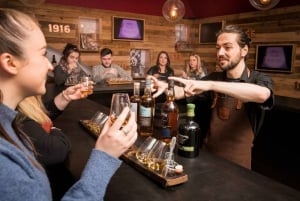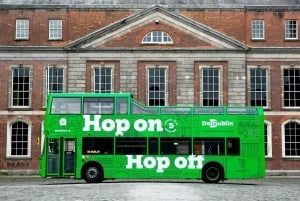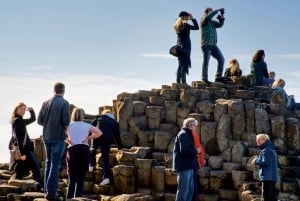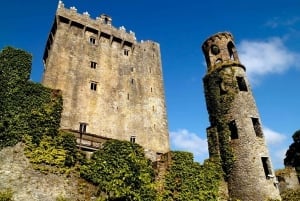Drumcondra + Glasnevin
On Dublin’s Northside lie the suburbs of Drumcondra and Glasnevin, welcomed into the fold of the city limits on 6 August 1900.
The average visitor to the city might never have heard of Drumcondra - unless they’re fans of Gaelic football or hurling that is, in which case they may well be making a beeline to Croke Park to watch Ireland’s national games being played. Croke Park is also the HQ of the Gaelic Athletic Association (GAA) – housing the official GAA Museum. The stadium is a 20-25 minute walk from Dublin city centre, or a 5-10 minute bus ride and well worth the trip.
Neighbouring Glasnevin has some worthwhile features itself. In 1790, the Irish Parliament granted funds to the Dublin Society (now the Royal Dublin Society or RDS), with the aim of creating a public botanic garden. Five years later, the National Botanic Gardens were founded at Glasnevin Hill.
Covering 20 hectares on the bank of the Tolka river, the Gardens’ original purpose was to promote a scientific approach to the study of agriculture. By the 1830s, that aim had been overtaken by the hot pursuit of botanical knowledge. This was aided by the acquisition of weird and wonderful plants from around the world, and by following the example of some of Britain’s great gardens, notably at Kew and Edinburgh. By 1838, the basic shape of the Gardens had been established.
As Curator, Ninian Niven (also designer of the ‘secret’ Iveagh Gardens off Harcourt Street in the city centre) laid out the system of roads and paths and located many of the features still present today. In fine weather, this is an excellent spot for a meander. However, even on a dull day the Gardens are worth a visit, as their outstanding Victorian wrought-iron glasshouses provide ample shelter and plenty of interest.
Having enjoyed all the growing, living things that the Gardens have to offer, a 15-minute walk away there’s a change of pace - a look at the deceased side of Dublin. Located on the Finglas Road, Glasnevin Cemetery (aka Prospect Cemetery) was founded in 1832 as a burial site for Catholics by nationalist political leader Daniel O’Connell. Since then, it’s become the national cemetery, a final resting place for people of all religions (or none whatsoever).
The Glasnevin Museum and Tours provide an intriguing look into Ireland’s past with a family-friendly emphasis, ‘whether you are into history or ghastliness’. Museum admission includes an opportunity to trace your roots in the Genealogy Area, and the Tours and Museum entertain with stories of the ordinary and extraordinary people buried here.
The list of figures from modern Irish history includes Cemetery founder Daniel O’Connell, commemorated near the entrance by a 50-metre-high tower; Michael Collins, charismatic leader of the independence struggle; Charles Stewart Parnell, founder and leader of the Irish Parliamentary Party whose gravestone of unhewn Wicklow granite reads only ‘Parnell’; and Éamon de Valera, prime minister, president and architect of modern Ireland. The arts are also represented by poet Gerard Manley Hopkins, playwright Brendan Behan and avid art and antiquities collector Sir Alfred Chester Beatty, who founded the library that bears his name (sited in Dublin Castle’s gardens). An honorary Irish citizen, on his death in 1968 Sir Alfred was accorded a State funeral by the Irish government - one of the few private citizens in Irish history to receive the honour.
No visit to the Cemetery and Museum is complete without a drink afterwards at Kavanagh’s around the corner, on Prospect Square - more popularly known as ‘The Gravediggers’ for obvious reasons. Offering comfort in a glass to the bereaved since 1833 (and more recently, thirsty tourists), this classic old pub is one of the finest examples of its breed.











